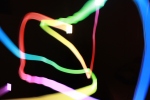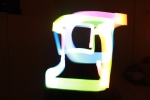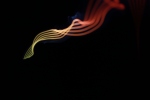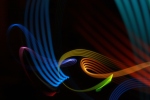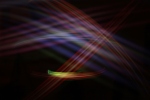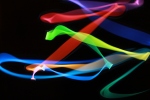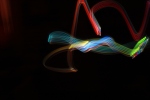Project 3: Final Proposal & Series
The Proposal
For this project I worked with light painting. I found light painting fun, since one cannot predict the results and the photographs usually turn out quite interesting. Inspired by Pablo Picasso’s light painting photographs, I chose to do self-portraits as my concept.
I asked three friends to draw freehand self-portraits – one of their face and one of their whole body. They were requested to do freehand drawings instead of tracing, as the self-portraits become more real. It’s the qualities and sides to a person that determine who they are. The photographs are meant give an idea of whom each subject is. The photographs were taken in each of their rooms to emphasise the concept even more. The visible context reveals more of their personalities.
Light painting is photographed by using one long exposure. Frank and Lillian M. Gilbreth first used this photo technique in 1914 to track the motion of manufacturing workers. Other requirements needed are a tripod, LED light and a dark room. A flash from another digital camera was used to light the background.
Continuity within the series is created through black and white photography. In doing so, they emphasise my artist precedent Pablo Picasso’s light painting photographs which were in black and white. Parts of the light paint drawings go outside the frame. However this does not ruin the image as one can visualise where the lines would have continued.
Reflection
Light painting is a learning process and it takes time and experimentation to get a final series. This project has given me experience and taught me several tricks on how to take long-exposure shots of light. The final series could perhaps have been more successful with a third photo shoot, being over the experimentation phase. But as my first light painting project, I am satisfied with the result in the final series.
























